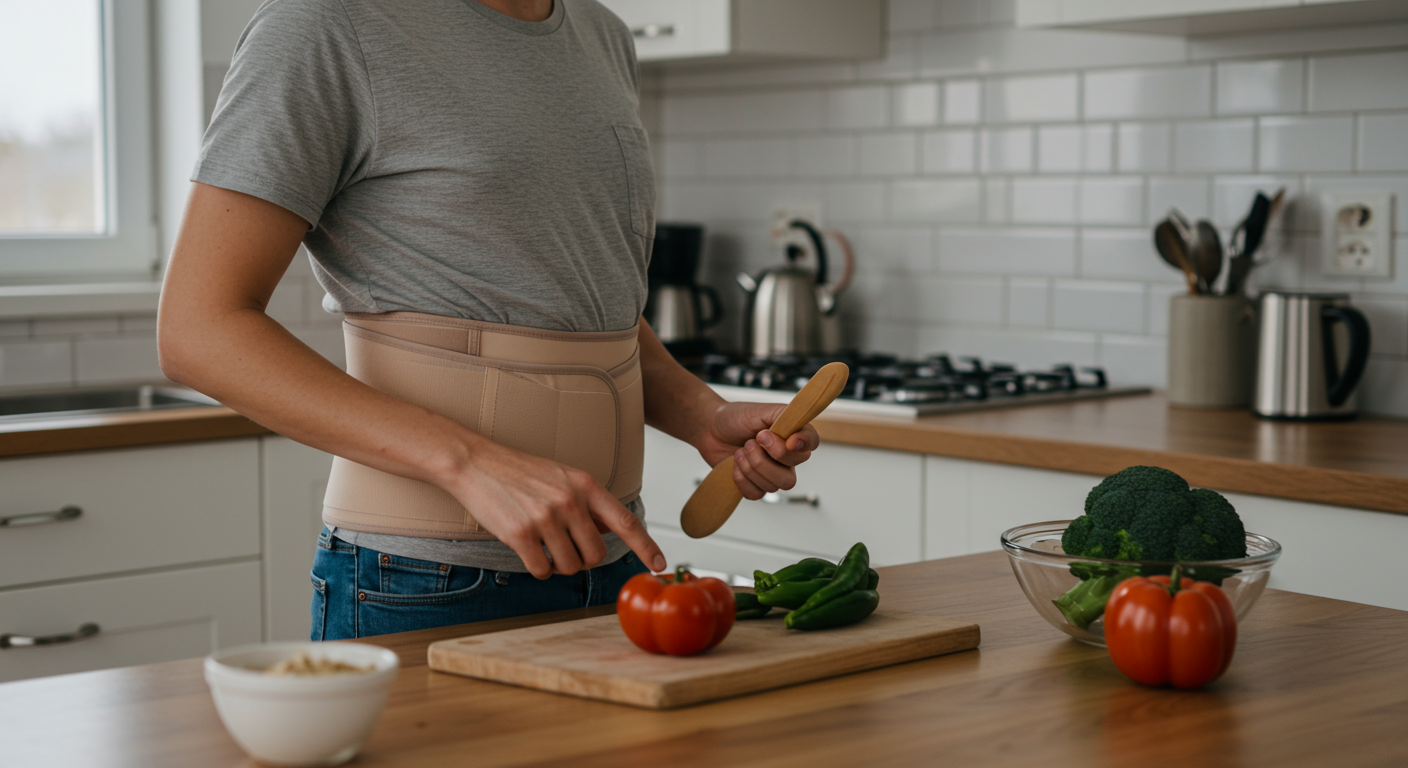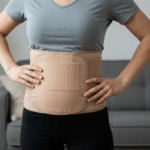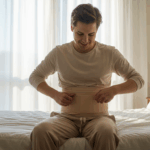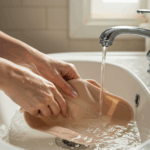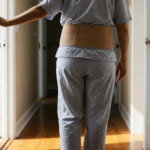Living Your Life: A Practical Guide to Daily Activities with Abdominal Support
Wearing an abdominal binder doesn’t mean putting your life on hold. With proper guidance and adjustments, you can maintain many of your daily activities while supporting your recovery. This guide will help you navigate everyday tasks safely and comfortably.
Morning Routine: Starting Your Day Right
Getting Out of Bed
The way you rise from bed can significantly impact your comfort throughout the day:
- Roll to your side before sitting up
- Use your arms to push yourself to a sitting position
- Put on your binder while sitting on the bed’s edge
- Stand slowly, using furniture for support if needed
Showering and Hygiene
- Remove the binder for showering (unless waterproof)
- Have a chair or shower stool available for safety
- Pat the skin dry thoroughly before reapplying
- Check for any skin irritation or redness
- Apply powder to reduce moisture if recommended
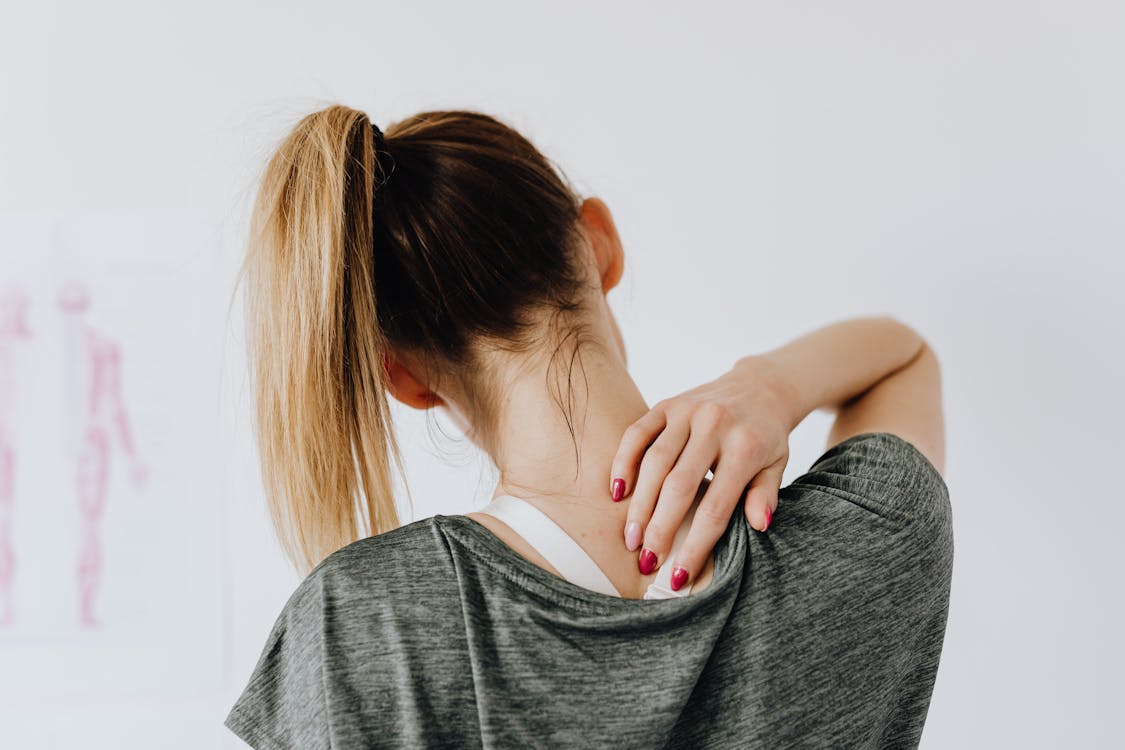
Dressing with an Abdominal Binder
Clothing Choices That Work
- Loose-fitting tops that don’t require raising arms overhead
- Button-up shirts for easy dressing
- Elastic waist pants or skirts
- Slip-on shoes to avoid bending
- Layers to accommodate temperature changes
Dressing Sequence
- Undergarments first
- Thin cotton layer (if wearing under binder)
- Abdominal binder
- Outer clothing
Workplace Considerations
Desk Job Modifications
- Adjust chair height for proper posture
- Use a small pillow for additional back support
- Take standing breaks every hour
- Keep binder adjustments discrete with loose clothing
- Consider a standing desk converter for variety
Physical Job Adaptations
- Follow lifting restrictions strictly
- Request temporary duty modifications
- Use proper body mechanics for all movements
- Take more frequent breaks
- Communicate with supervisors about limitations
Household Activities
Safe Housework Practices
- Avoid heavy lifting (follow doctor’s weight limits)
- Use long-handled tools to minimize bending
- Break tasks into smaller segments
- Ask for help with strenuous activities
- Prioritize essential tasks only
Kitchen Safety
- Prepare meals while seated when possible
- Keep frequently used items at counter height
- Use lightweight cookware
- Batch cook when feeling energetic
- Accept help from family and friends
Exercise and Movement
Approved Activities (Always confirm with your doctor)
- Gentle walking as tolerated
- Deep breathing exercises
- Ankle pumps and leg movements
- Light stretching as approved
- Gradual increase in activity level
Activities to Avoid
- Heavy lifting or straining
- Twisting movements
- High-impact exercise
- Swimming (unless binder is waterproof)
- Contact sports
Sleep Positioning
Comfortable Sleep Strategies
- Some people wear binders 24/7, others remove for sleep (follow doctor’s orders)
- Use pillows for support:
- Under knees when on back
- Between knees when on side
- Small pillow under abdomen if approved
- Avoid sleeping on stomach
- Keep binder within reach for nighttime bathroom trips
Social Activities and Travel
Dining Out
- Choose restaurants with comfortable seating
- Avoid tight booth seating
- Eat smaller, more frequent meals
- Limit carbonated beverages
- Carry adjustment supplies
Car Travel
- Adjust seat for proper support
- Use a small pillow behind lower back
- Stop every hour for stretching
- Keep seatbelt positioned correctly
- Consider passenger seat for longer trips
Binder Maintenance During Daily Use
Regular Adjustments
- Check fit after meals
- Readjust after bathroom visits
- Loosen slightly when sitting for extended periods
- Ensure even compression throughout the day
Hygiene Management
- Have 2-3 binders to rotate
- Wash according to manufacturer instructions
- Allow complete drying before wearing
- Replace when elastic loses effectiveness
Warning Signs to Stop Activities
- Severe pain or discomfort
- Difficulty breathing
- Dizziness or lightheadedness
- Unusual swelling
- Skin breakdown or severe irritation
- Any symptoms your doctor warned about
Building Your Support System
Communication is Key
- Inform close contacts about your limitations
- Don’t hesitate to ask for help
- Join online support groups for tips
- Keep emergency contacts readily available
Gradual Return to Normal
Recovery is not linear. Some days will be better than others:
- Keep a symptom diary
- Celebrate small victories
- Don’t compare your progress to others
- Follow up regularly with healthcare providers
- Be patient with your body’s healing process
Remember, wearing an abdominal binder is temporary. Focus on proper healing now for better long-term outcomes. Always follow your healthcare provider’s specific instructions, as they know your individual situation best.
